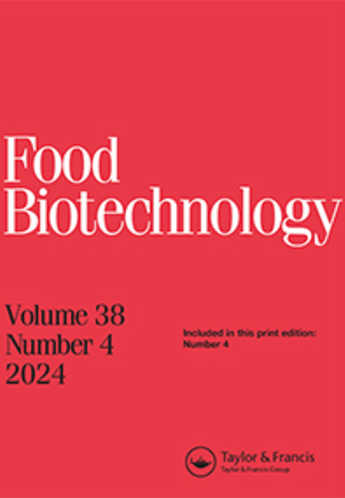香兰素的微生物合成、分离和回收研究综述
IF 1.6
4区 农林科学
Q4 BIOTECHNOLOGY & APPLIED MICROBIOLOGY
引用次数: 23
摘要
摘要:香兰素是一种广泛应用的香料化合物,在食品和制药行业具有重要的应用价值。香兰素香料化合物以天然、合成和生物技术产生的形式存在。食品安全部门认为生物技术衍生的香兰素与天然香兰素相同。本文综述了香兰素的微生物生产方法。本文综述了利用富含丁香酚、阿魏酸、异丁香醇、木质素的农业副产品生物转化香兰素,以及细菌、真菌和重组微生物细胞从头合成香兰素的最新趋势。这篇综述还概述了香兰素合成中涉及的酶。下一节介绍了提高香兰素产量所需的培养条件。这篇综述提供了关于下游工艺的广泛知识,如分离、表征、纯化和回收。最后一节介绍了生产过程中的局限性,特别是毒性和副产物的形成,以及使用吸附树脂和重组微生物细胞发酵技术克服这些因素的各种策略。本文章由计算机程序翻译,如有差异,请以英文原文为准。
A comprehensive review on vanillin: its microbial synthesis, isolation and recovery
ABSTRACT Vanillin is an extensively used flavor compound valuable in the food and pharmaceutical industries. Vanillin flavoring compound is present as natural, synthetic, and biotechnologically generated. The food safety authorities contemplate biotechnologically-derived vanillin as nature-identical vanillin. This review endeavors to present an overview of the microbial approach for vanillin production. This review summarizes the current trend in the biotechnologically-derived vanillin bioconversion from agricultural byproducts rich in eugenol, ferulic acid, isoeugenol, lignin, and de novo synthesis by bacteria, fungi, and recombinant microbial cells. This review also outlines the enzymes involved in vanillin synthesis. The subsequent section deals with the cultural conditions needed for the enhanced production of vanillin. This review offers broad knowledge about the downstream processes such as isolation, characterization, purification, and recovery. The concluding section describes the limitation in the production process, specifically toxicity and by-product formation, and various strategies to overcome these factors using fermentation technology with adsorbent resins and recombinant microbial cells.
求助全文
通过发布文献求助,成功后即可免费获取论文全文。
去求助
来源期刊

Food Biotechnology
工程技术-生物工程与应用微生物
CiteScore
3.80
自引率
0.00%
发文量
15
审稿时长
>12 weeks
期刊介绍:
Food Biotechnology is an international, peer-reviewed journal that is focused on current and emerging developments and applications of modern genetics, enzymatic, metabolic and systems-based biochemical processes in food and food-related biological systems. The goal is to help produce and improve foods, food ingredients, and functional foods at the processing stage and beyond agricultural production.
Other areas of strong interest are microbial and fermentation-based metabolic processing to improve foods, food microbiomes for health, metabolic basis for food ingredients with health benefits, molecular and metabolic approaches to functional foods, and biochemical processes for food waste remediation. In addition, articles addressing the topics of modern molecular, metabolic and biochemical approaches to improving food safety and quality are also published.
Researchers in agriculture, food science and nutrition, including food and biotechnology consultants around the world will benefit from the research published in Food Biotechnology. The published research and reviews can be utilized to further educational and research programs and may also be applied to food quality and value added processing challenges, which are continuously evolving and expanding based upon the peer reviewed research conducted and published in the journal.
 求助内容:
求助内容: 应助结果提醒方式:
应助结果提醒方式:


